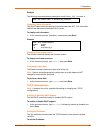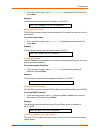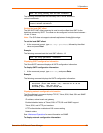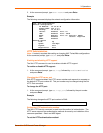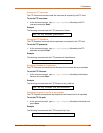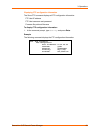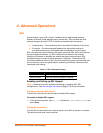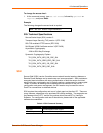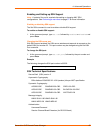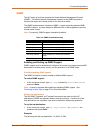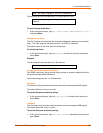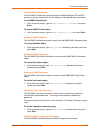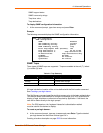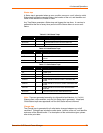
4: Advanced Operations
SSL
Secure Socket Layers (SSL) version 3 enables secure web browser sessions
between a Remote Power Manager and a remote user. SSL provides two chief
features designed to make TCP/IP (Internet) transmitted data more secure:
Authentication – The connecting client is assured of the identity of the server.
Encryption – All data transmitted between the client and the server is
encrypted rendering any intercepted data unintelligible to any third party.
SSL uses the public-and-private key encryption system by RSA, which also requires
the use of digital certificates. An SSL Certificate is an electronic file uniquely
identifying individuals or websites and enables encrypted communication; SSL
Certificates serve as a kind of digital passport or credential. The product’s SSL
Certificate enables the client to verify the unit’s authenticity and to communicate with
the unit securely via an encrypted session, protecting confidential information from
interception and hacking.
Table 4-1. SSL Command Summary
Command Description
Set SSL Enables/disables SSL support
Set SSL access Sets SSL access as optional or required
Enabling and Setting up SSL Support
Note: A restart of the unit is required after setting or changing ANY SSL
configurations. See Performing a warm boot on page 57 for more information.
Enabling or disabling SSL support
The Set SSL command is used to enable or disable SSL support.
To enable or disable SSL support:
1. At the command prompt, type set ssl, followed by enabled or disabled and
press Enter.
Setting SSL access level
The Set SSL Access command is used to assign use of SSL as optional or required.
The default access level is set to optional.
SecureLinx SLP Remote Power Manager 65



